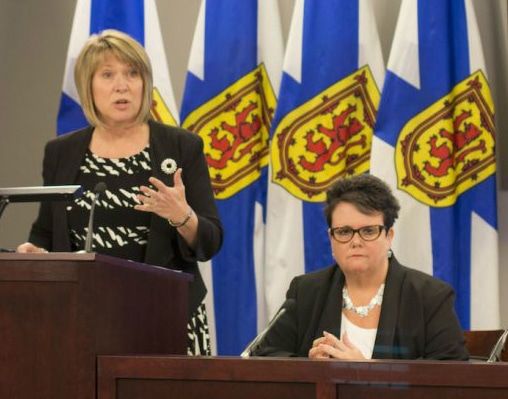KJIPUKTUK (Halifax) – The raise in income assistance rates that the government keeps talking about will leave many recipients with less buying power than they had in 2016, the last year the rates were increased.
Whenever a story about people living on income assistance in dire straits and going hungry hits the news, reporters dutifully ask Community Services for comment. The answer is always the same. Wait until the Employment Support and Income Assistance transformation is completed, we will raise the rates and things will get better!

That response is so old by now that even former minister of Community Services Joanne Bernard got years of traction out of it, before she was defeated in the last election.
The jury is still out on what the transformation will bring, mostly because we have no idea what it means and the department isn’t telling.
But we do know that the increase in the rates elected officials and bureaucrats keep referring to is a raise in income assistance benefits in 2019, by 2% for people deemed able to work and 5% for people who live with disabilities.
During last year’s election the Liberals mentioned it a lot. Spryfield Liberal MLA Brendan Maguire even managed to make it sound as if the raise was just around the corner, conveniently keeping the 2019 part out of a pre-election Facebook video he made for his constituents, many of whom are on welfare.
The actual dollar figure associated with the raise has also been exaggerated.
“We will increase rates for all household types to the fixed maximum, as well as increase rates by an additional 2% for clients able to work and 5% for clients who are unable to work. For example, this would mean a single disabled client would receive an additional $89 each month and a couple with one or two children would receive an additional $93 each month,” states the formal Liberal election platform.
Well, turns out the $89 and $93 do not apply to everybody. A departmental slide (below), part of a presentation for internal consumption dated October 2017, suggests those amounts could be much lower.
Income assistance recipients currently receiving the maximum rates would only receive $40 and $23 respectively. A single person may only get an additional $11, a single parent with one child is looking at a whopping $17 per month. Most income assistance recipients I know receive that maximum rate.
So what do these raises amount to when all is said and done?
Well, life gets more expensive by the day, as people on income assistance know all too well.
People on income assistance received their last (very tiny) raise in April 2016. Since that raise the cost of living increased by 1.4% from 2016 to 2017, and is expected to increase cumulatively by 2.43% from 2017 to 2018, and again from 2018 to 2019.
That means that if as a single employable individual you were getting the maximum $575 in April 2016, you will need $600.44 by 2019, just to maintain your buying power in the grocery store.
However, all the raise will give you is $586. In buying power you’ll be poorer than you were in 2016 right after the last raise, by something like 14 bucks.
That pattern holds for all the so-called employable income assistance recipients currently receiving the maximum rate. They all lose.
Even the people with disabilities currently receiving the maximum rate, the five-percenters, will barely be better off, and will see their gained increase quickly melt away again in the years after 2019.
And there is more bad news. Whatever the department gives with the one hand it may well take away with the other.
At the Nova Scotia Advocate we continue to hear stories both from community workers and people on income assistance that together suggest that there is a concerted effort to chip away at things like special needs allowances, especially for medical travel. Budget numbers show that this is more than anecdotal.
Still, any increase, no matter how trivial, is better than none at all. So why wait until 2019?
It can’t be done any earlier, computer systems and “people systems” need to be changed first to accommodate the new rules, explained Community Services Deputy Minister Lynn Hartwell at last week’s Public Accounts committee meeting at the Nova Scotia legislature.
See also: News brief – Squeezing welfare recipients for thirty years and counting
Note: Cumulative inflationary increases were calculated using the online Canada Inflation Calculator and the Canada Future Inflation Calculator. Future inflation rates were set based on estimates provided by the Organisation for Economic Co-operation and Development (OECD.)
If you can, please support the Nova Scotia Advocate so that it can continue to cover issues such as poverty, racism, exclusion, workers’ rights and the environment in Nova Scotia. A paywall is not an option, since it would exclude many readers who don’t have any disposable income at all. We rely entirely on one-time donations and a tiny but mighty group of dedicated monthly sustainers.





Social Assistance rates need to go higher to survive in our economy with rents rising and groceries climbing in price it needs to be more than people are receiving on assistance there needs to be a huge change. Thank You,
I am grateful for what I get for me and my niece that remains with me but the struggle is real.when rent,food,power and etc is going up.something needs to give.i watch every dollar I spend and still when everything said and done there isn’t much lift if any..The cost of living goes up every year and social Assistance remain the same.i don’t understand how this is.i am not looking to be rich or anything but I need to know I can pay my do’s at the end of the day. So many people are struggle let’s be honest and it is not rite.